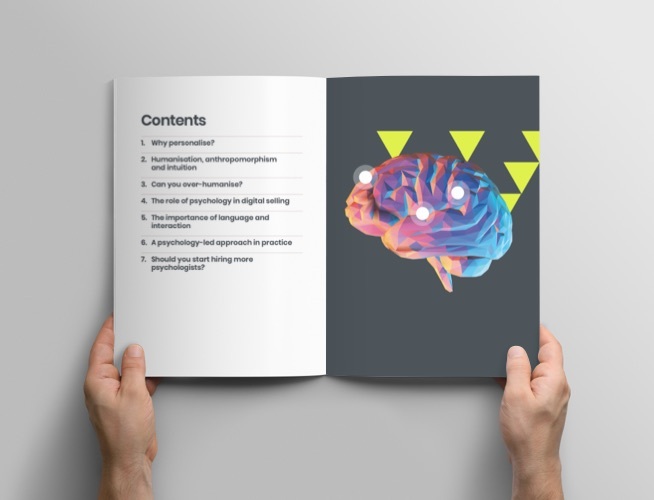
Navigating the holiday season is a whirlwind for online businesses, marked by intense peaks like Black Friday, Cyber Monday, and Christmas. These peak periods significantly shape the digital landscape, with a staggering 90% of the top-selling days concentrated during this time. The challenge arises in maintaining momentum beyond this busiest trading period.
Examining data from our customers throughout Q4 2023, it’s evident that the fourth quarter remains pivotal, witnessing a substantial chunk of sales. However, some of the traditionally impactful holidays may not wield the same influence as before. We’ve seen an average 11% decline over the past two years in the proportion of yearly sales represented by the Black Friday weekend.
With certain holidays losing their impact on annual sales, a window of opportunity opens to captivate shoppers throughout the entire year.

1. Engage online customers at the right time
Customers are more likely to engage if the offer of assistance aligns with their key goals and motivation. When shopping in-store, sales advisors know exactly when to engage a customer and offer assistance. Get this wrong and approach too soon (or too late!) and that sales advisor is less likely to close a sale. The same rules should apply to your online store.
Tailor each online interaction to individual preferences, suppress needless interruptions for users who won’t benefit from it, and offer the right assistance for those that show signs of needing help.
At 15gifts, we use key consumer psychology principles to replicate the art of in-store advisors, engaging consumers at just the right time. By monitoring each customer from the moment they land on a site, we build up a set of behavioural traits that are used to create a tailored engagement strategy – ensuring that every conversation starts with a message that aligns with each customer’s goals & motivation.
2. Offer fewer choices for better decision-making

An abundance of choices can overwhelm consumers, leading to delayed purchases and potential basket abandonment, impacting sales and revenue.
The “paradox of choice,” identified by psychologist Barry Schwartz, reveals that having too many options doesn’t necessarily enhance decision satisfaction; rather, it tends to hinder it. Striking a balance between providing choices and preventing choice overload is a challenge faced by businesses.
To navigate this challenge use choice architecture – especially when dealing with a diverse or complex product range. Choice architecture, as conceptualised by Richard Thaler and Cass Sunstein, refers to the intentional way in which choices are presented in order to facilitate a decision.
Leverage data to understand prospect needs, curating a limited product selection that aligns with individual preferences to instil confidence in purchasing choices.
The 15gifts engine empowers customers by offering a curated selection of options based on data-driven insights. Our unique approach involves placing the final decision in the hands of customers, utilising anchors to influence decision-making and presenting effective alternatives to increase confidence in the primary recommendation.
3. Retarget and re-engage: tailored promotions

After the peak season, it’s crucial to focus on reconnecting with potential customers who may have abandoned their carts or delayed purchases. This targeted approach ensures that your brand stays top-of-mind, increasing the likelihood of conversion.
Utilise data to deliver personalised deals and incentives when your shoppers are active elsewhere online. Emphasise the value proposition clearly, aligning it with the specific needs and motivations of individual customers. This not only retains their interest but also enhances the chances of successful re-engagement.
And remember, you don’t have to discount heavily to win customers – be clear what value you are offering and how it meets the needs and motivations of the individual.
A Fortune 100 company used the unique data generated through their 15gifts’ guided selling engine, to improve their personalisation experience and uplift conversion rates. By using Profiles data to personalise promotional banners with products tailored to each customer’s preferences, the company saw a 20% increase in conversion rates vs. the control experience.
4. Upsell strategically to maximise opportunities

Maximise the value of each customer interaction by implementing strategic upselling techniques. The post-peak period is an opportune time to introduce new products, capitalise on customer loyalty, and increase Average Revenue Per User (ARPU).
Seems obvious, right? But how do you do this in the digital world where upsell rates are much lower than in retail stores? We know that an excess of choices can hinder decision-making and lead to dissatisfaction. This principle extends to upsells, where customers are more likely to embrace additional products when presented with a limited, personalised set of options that meet their needs or desires.
In-store, sales advisors are experts at personalising upsell offers, bringing a targeted option into conversation at just the right moment. It’s no wonder that attach rates are much higher in-store than they are online.
Replicate this craft in your online store by displaying an upsell offer just before going through to the basket, using data to reduce and personalise choice. During a recent trial with a major telco organisation, we were able to drive an uplift in insurance sales of 59% when compared to the control by using insights to tailor offers to each individual.
5. Learn from the past: reflect and plan ahead

This might seem obvious but we can often get swept up in exciting new plans and strategies and the previous year becomes a thing of the past. As the holiday fervour fades, it’s crucial to analyse past performance. Examine what worked and what didn’t during the peak season. Look back on previous years to understand patterns throughout the entire year. By identifying customer preferences, pinpointing popular products, and evaluating the efficacy of marketing strategies, you lay the foundation for a more informed approach in the upcoming year.
As we move into 2024, retailers are up against the cost of living crisis, with shoppers being more cautious about making purchases. Leverage historical data to craft value propositions that align with economic realities and evolving consumer preferences. Set realistic and impactful goals for the new year based on insights.
Harness the power of data for year-round success
As we begin 2024, navigating through economic uncertainties demands a strategic approach to online sales. The linchpin of this approach lies in the power of data. Engaging customers at the right time, streamlining choices, and presenting offerings that deeply resonate with their needs and motivations are all facets of a successful strategy, underpinned by the intelligent use of data.
Accessing the right data is the key to excelling at personalisation, creating a seamless customer experience, and, most importantly, ensuring consistent revenue growth throughout the year. In a landscape where every click and interaction matters, those who master the art of leveraging data will not only weather uncertainties, but thrive in the ever-evolving digital commerce landscape.
Need some help getting started? Get in touch to discover how we can help you harness the power of data-driven insights for sustained success.



